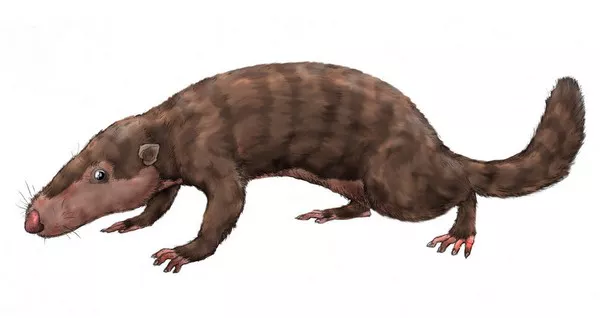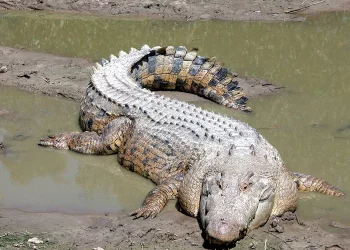Understanding the origins of mammals provides a fascinating glimpse into the complex history of life on Earth. Mammals, as we know them today, are a diverse group of animals ranging from tiny shrews to enormous whales. But to truly appreciate this diversity, we must journey back to the very beginning—to the first mammal that ever roamed our planet. This article delves into the origins of mammals, exploring their evolutionary journey and the significant milestones that marked their development.
The Emergence of Mammals: A Timeline
The story of the first mammal begins in the Mesozoic Era, often called the “Age of Reptiles,” which spanned from approximately 252 to 66 million years ago. This era is divided into three periods: the Triassic, Jurassic, and Cretaceous. It is within the Triassic Period, around 225 million years ago, that the earliest mammals are believed to have emerged.
1. Pre-Mammalian Ancestors: Synapsids
To understand the evolution of mammals, we must first look at their ancestors, the synapsids. Synapsids are a group of amniotes that diverged from the reptilian lineage around 310 million years ago during the late Carboniferous period. Unlike reptiles, synapsids had a single temporal fenestra—a hole in the skull behind the eyes—which allowed for the attachment of larger jaw muscles. This characteristic is crucial in understanding the evolutionary lineage leading to mammals.
Pelycosaurs were among the earliest synapsids. These reptile-like creatures dominated the land during the Permian Period (299 to 251 million years ago). Over time, a subgroup of pelycosaurs evolved into therapsids, which exhibited more mammal-like characteristics, such as differentiated teeth and more advanced limb structures.
See Also: Top 10 Largest Mammals in the Arctic (Plus Pistures!)
2. Therapsids: The Direct Ancestors of Mammals
Therapsids flourished during the middle to late Permian Period and continued to thrive into the Triassic. These animals exhibited a range of adaptations that made them more mammal-like than their pelycosaur predecessors. Notable features included more complex jaw structures, better-developed teeth differentiation (incisors, canines, and molars), and a more upright posture.
One significant subgroup of therapsids is the cynodonts, which appeared around 260 million years ago. Cynodonts possessed several key characteristics that foreshadowed true mammals, including a secondary palate (allowing simultaneous breathing and eating), more efficient limb positioning, and further differentiation in teeth. These evolutionary advancements set the stage for the emergence of the first true mammals.
Defining the First Mammal
Identifying the first true mammal involves distinguishing between mammal-like reptiles (synapsids) and mammals based on specific anatomical and physiological traits. Key characteristics of mammals include:
Three Middle Ear Bones: Mammals have three bones in the middle ear (the malleus, incus, and stapes) that aid in hearing.
Hair or Fur: While not all early mammals had fur, the presence of hair is a defining mammalian characteristic.
Mammary Glands: Mammals nurse their young with milk produced by mammary glands.
Differentiated Teeth: Mammals have a variety of teeth types (incisors, canines, premolars, and molars) adapted for different functions.
Given these criteria, the earliest known true mammals emerged during the late Triassic Period.
Morganucodon: An Early Mammalian Pioneer
One of the earliest and most well-known candidates for the first true mammal is Morganucodon, a small, shrew-like creature that lived around 205 million years ago during the late Triassic and early Jurassic periods. Fossils of Morganucodon have been found in Europe, North America, and China, indicating a widespread early distribution.
Characteristics of Morganucodon
Size and Appearance: Morganucodon was relatively small, measuring about 10 cm (4 inches) in length. It had a long snout, sharp teeth, and likely covered in fur.
Dentition: Its teeth were differentiated into incisors, canines, and molars, which is a hallmark of true mammals.
Jaw Structure: Morganucodon possessed a dual jaw joint, a transitional feature between reptilian and mammalian jaw structures. This adaptation was crucial in the evolution of the three middle ear bones seen in modern mammals.
Diet and Lifestyle: Morganucodon was probably nocturnal and insectivorous, using its sharp teeth to capture and consume small prey.
The Evolutionary Significance of Morganucodon
Morganucodon represents a crucial step in mammalian evolution, bridging the gap between mammal-like reptiles and true mammals. Its anatomical features provide insights into the adaptations that allowed early mammals to thrive in a world dominated by dinosaurs. The development of a more advanced jaw and hearing apparatus, along with differentiated teeth, were significant evolutionary advancements that set the stage for the diversification of mammals.
Other Early Mammals
While Morganucodon is often cited as one of the earliest true mammals, it is not the only candidate. Several other early mammalian genera contribute to our understanding of mammalian origins.
1. Eozostrodon
Eozostrodon is another small, shrew-like creature that lived during the late Triassic to early Jurassic periods. Like Morganucodon, it exhibited many characteristics of true mammals, such as differentiated teeth and a more advanced jaw structure.
2. Megazostrodon
Megazostrodon is yet another early mammal from the late Triassic to early Jurassic periods. It shared many features with Morganucodon and Eozostrodon, including a similar size and nocturnal, insectivorous lifestyle. The fossils of Megazostrodon have provided valuable information about the early adaptations that allowed mammals to succeed.
3. Sinoconodon
Sinoconodon lived around the same time as Morganucodon and is known from fossils found in China. It displayed a mix of reptilian and mammalian traits, making it an important transitional fossil in the study of mammalian evolution.
The Rise of Mammals: Post-Triassic Diversification
The extinction event at the end of the Triassic Period, approximately 201 million years ago, led to significant ecological changes, creating opportunities for the surviving mammals to diversify. The Jurassic and Cretaceous periods saw the emergence of more specialized mammalian forms, including the ancestors of modern monotremes, marsupials, and placental mammals.
1. Jurassic Mammals
During the Jurassic Period (201 to 145 million years ago), mammals remained relatively small and primarily nocturnal. This period saw the rise of various groups, such as the multituberculates, which were among the most successful early mammals, resembling modern rodents.
2. Cretaceous Mammals
The Cretaceous Period (145 to 66 million years ago) marked a significant diversification of mammals. This era witnessed the emergence of more advanced mammalian groups, including early representatives of marsupials and placentals. These mammals coexisted with dinosaurs, occupying various ecological niches and exhibiting a range of dietary adaptations.
Mammals After the Dinosaurs: The Cenozoic Explosion
The mass extinction event at the end of the Cretaceous Period, approximately 66 million years ago, which led to the demise of the non-avian dinosaurs, paved the way for the rapid diversification and expansion of mammals. This era, known as the Cenozoic Era, is often referred to as the “Age of Mammals.”
1. Paleocene Epoch
In the immediate aftermath of the extinction event, during the Paleocene Epoch (66 to 56 million years ago), mammals began to diversify rapidly. They occupied niches left vacant by the dinosaurs and evolved into various forms, ranging from small insectivores to larger herbivores and carnivores.
2. Eocene Epoch
The Eocene Epoch (56 to 34 million years ago) saw the emergence of many modern mammalian orders, including early primates, bats, and cetaceans (whales). This period was characterized by a warm climate, which facilitated the spread and diversification of mammals across the globe.
See also: North America’s 10 Largest Mammals (Plus Pistures!)
Conclusion
The journey to uncovering the first mammal on Earth is a fascinating exploration of life’s complexity and adaptability. From the early synapsids to the rise of Morganucodon and its contemporaries, the evolutionary path of mammals is marked by significant advancements and adaptations. These early pioneers set the stage for the incredible diversity of mammalian life that we see today, highlighting the intricate web of evolutionary processes that have shaped life on our planet.
You Might Be Interested In:



























